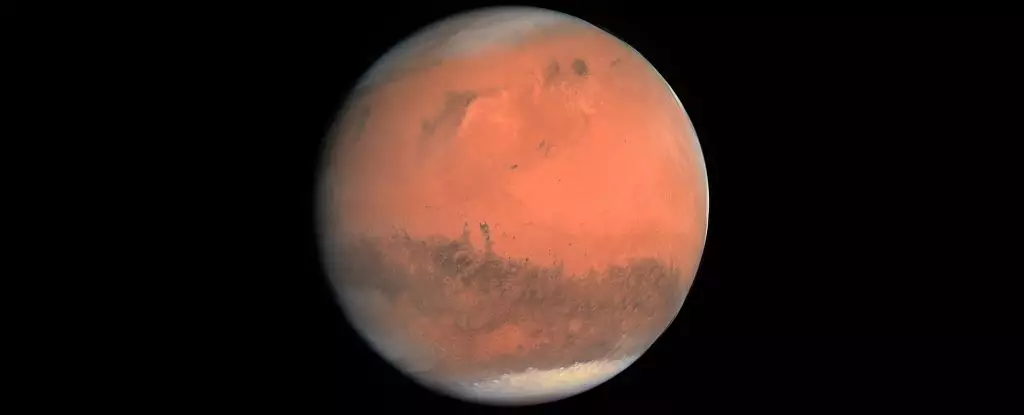Mars, often referred to as the “Red Planet,” boasts a striking reddish complexion that sets it apart from its planetary neighbors in the Solar System. For decades, scientists assumed that this unique coloration was predominantly due to the dry oxidation of hematite, an iron oxide presenting itself under arid conditions. However, a groundbreaking study has emerged, challenging traditional beliefs and proposing a new narrative regarding the oxidation process that gives Mars its iconic hue.
Recent research conducted by planetary geologist Adomas Valantinas and his team at Brown University offers compelling evidence that the presence of water played a pivotal role in the rusting process of Martian rocks. Contrary to the long-held belief that rusting on Mars is a result of hematite forming in dry conditions after the planet’s water had evaporated, this new study suggests that the mineral ferrihydrite, which develops in the presence of cool water, could be responsible for the planet’s reddish appearance.
This shift in understanding implies that the oxidation of iron on Mars occurred during a time when liquid water was present on the surface. For many years, the prevailing wisdom was that the sedimentary processes that colored Mars happened after water vanished from its environment. This new perspective prompts us to reevaluate our assumptions about Mars’ geological history.
Previous observations of Martian dust collected by various spacecraft indicated a lack of water, leading to the conclusion that hematite was the primary mineral responsible for Mars’ color. Hematite’s formation process was long believed to be a sign of a dry, desolate Mars, reinforcing the belief that the red planet had transitioned from a wetter past. Yet, this new research, powered by meticulous analyses of Martian meteorites and rover data, indicates that ferrihydrite might have played a more significant role in the planet’s past.
Valantinas and his team began replicating Martian dust in laboratory conditions using different iron oxide varieties. Their findings showed that when comparing the lab-produced dust with actual Martian samples, ferrihydrite produced match quality far superior to that of hematite. This crucial detail could offer diverse implications not just for our comprehension of Mars, but also for potential life-sustaining conditions that could have existed there.
The researchers employed advanced techniques to pulverize various oxidized iron minerals to a grain size that mimicked Martian dust particles. After meticulous analysis of these samples, the results consistently pointed to ferrihydrite being a more plausible source for the oxidation observed on the Martian surface. This discovery is significant as it ties directly to the condition of Mars in its ancient past, suggesting that rust was formed during a period when the planet was still wet.
The implications of this finding are profound. The presence of ferrihydrite suggests that Mars had a much more complex and perhaps hydrating geological history than previously believed. The color of the planet might be more than just an artifact of a dry landscape—it could mean that the rusting process started while water was actively shaping the Martian surface.
While the findings of Valantinas and his research team open doors for reinterpreting the Martian past, they also call for further investigation. As future missions prepare to collect samples from Mars, this new understanding sets the stage for exciting discoveries. An analysis of these physical samples could either reinforce the ferrihydrite hypothesis or introduce yet another layer to the understanding of Mars’ intriguing history.
The iconic red hue of Mars, long attributed to the dry oxidation processes of hematite, is more nuanced than once thought. As scientific inquiry continues to evolve, the necessity for reexamining preconceptions becomes paramount. Mars still retains its identity as the Red Planet; however, our grasp of what lends it such a color is quickly adapting, underscoring the need for ongoing research to uncover the secrets of this fascinating world.

